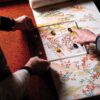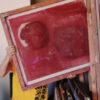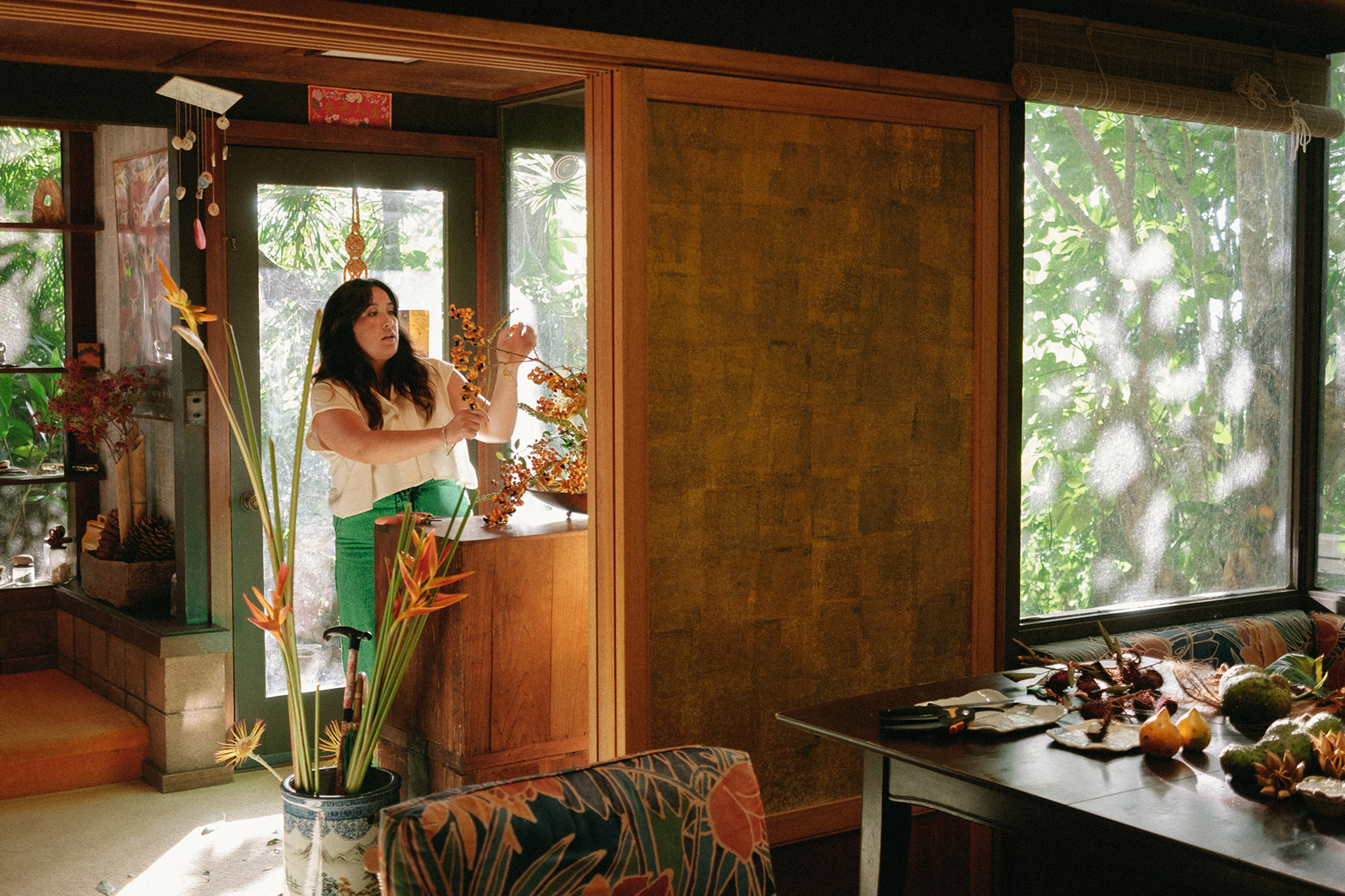Text by Eunica Escalante
Images by Josiah Patterson
Viewing Ren MacDonald-Balasia’s work prompts fantastical musing. What seems like a crimson tentacle emerges from the darkness. Then the light shifts, transforming it from a writhing mass of limbs into a bramble of thorns. No, wait, it’s a lizard’s curving spine. Or something else—is it unnatural, fabricated by man? I step forward to better understand. Yet closer observation does not yield clarity. Somehow, it is none and all of them at the same time.
“They’re flowers,” says a voice behind me, ending my rumination. MacDonald-Balasia steps forward.
We’re in her oba-chan’s (grandmother’s) home, where the part-time LA-based floral arranger stays when working in Honolulu. She gestures towards the arrangement and dissects it for me. What I mistook for tentacles are seeds of palm trees hanging from heaving stalks, which she manipulated to look like barbed wire. They envelop a pile of rambutan, a ruby-colored fruit native to Southeast Asia known for its prickly exterior. The tangled heap is balanced, rather precipitously, on a short ceramic vase. I marvel at how it seemingly defies the laws of physics. MacDonald-Balasia confesses she often feels the same.
“Whenever I make an arrangement, I’m always holding my breath,” she says, “especially for the more complicated ones.”
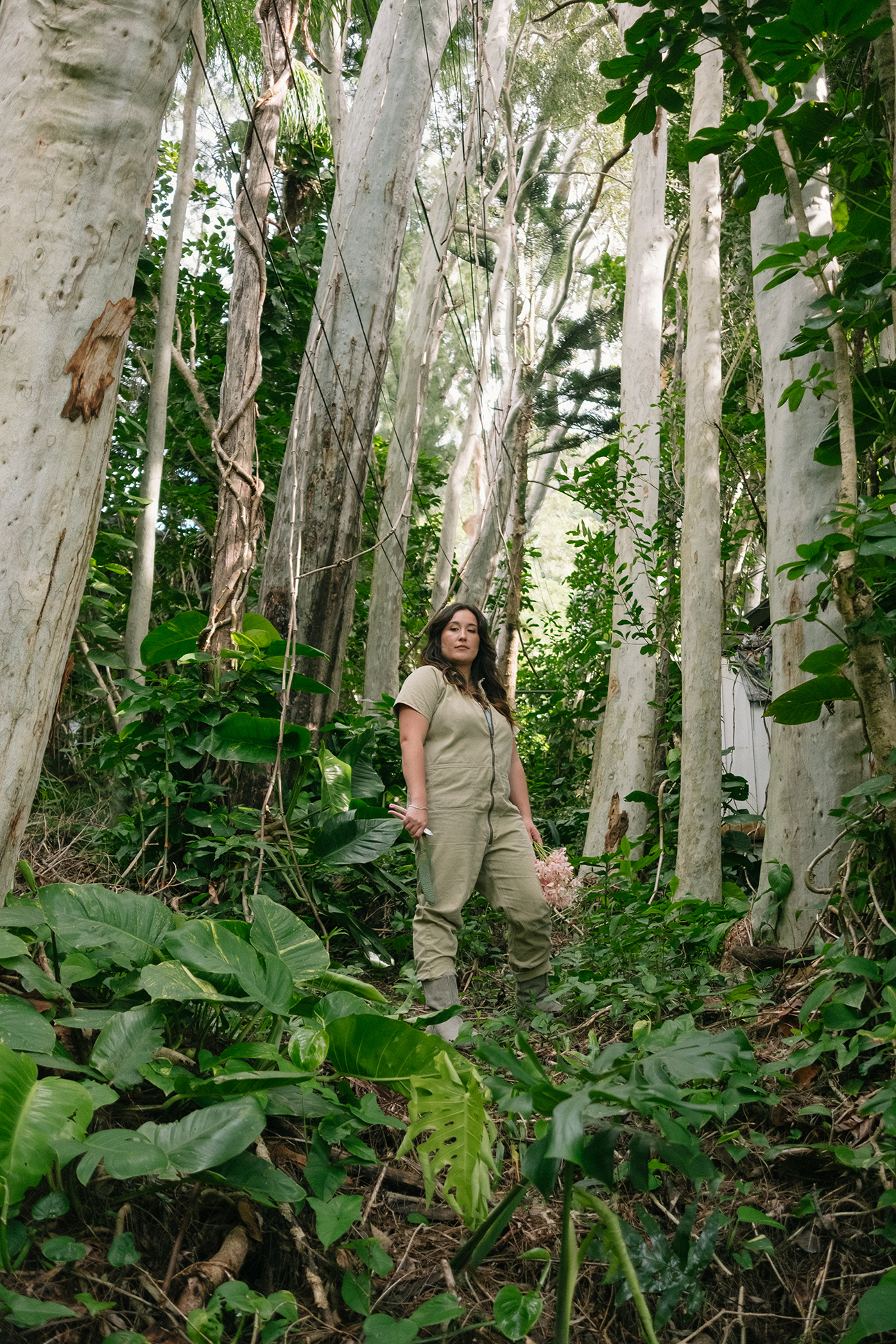
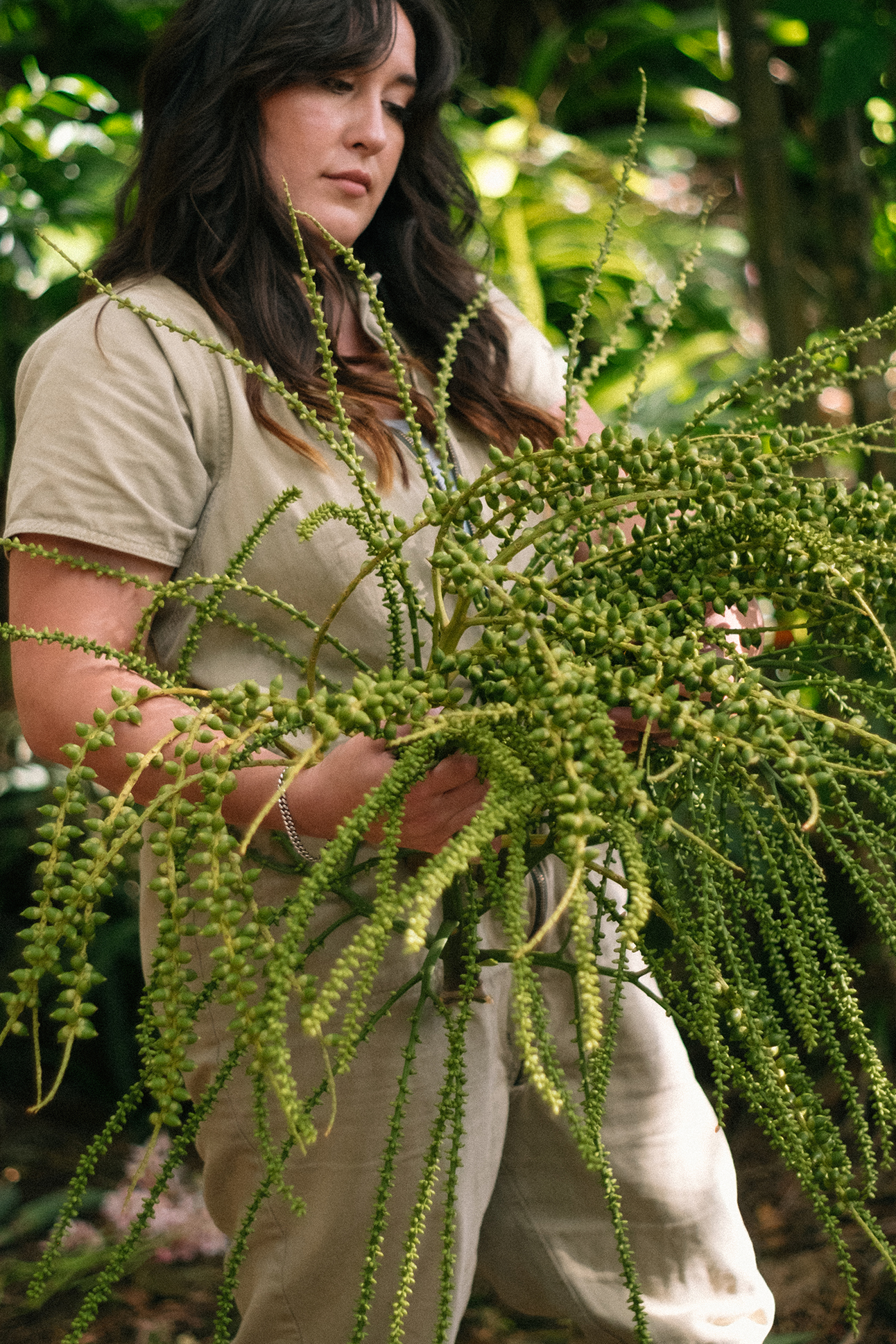
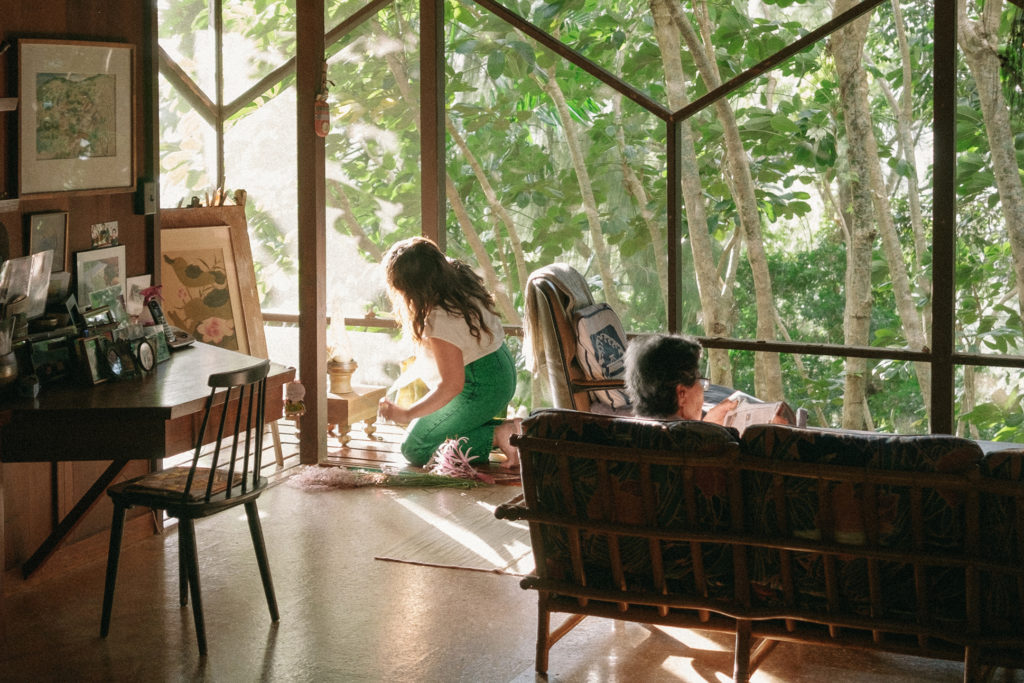
A quick perusal through MacDonald-Balasia’s Instagram, which doubles as a portfolio for her company, Renko Floral, defines what she means by “more complicated.” One post shows an explosion of verdant foliage interwoven with the tendrils of palm tree flowers and hands of unripe bananas still attached to the stalk, complete with a banana heart at the end. In another, handfuls of rambutan and longan are piled loosely among budding mink protea. Starfruit, bitter melon, and strings of long bean peek out from under the mountain of vegetation.
A lot of Macdonald-Balasia’s “living sculptures,” as she likes to call them, have an air of wild intensity, as if they were plucked right out of nature.
“My arrangements, they replicate an impression that nature has left on me,” she says. “I’m inspired by what the material looks like growing in nature. It’s about bringing the natural world into our unnatural world.”
She traces this fascination back to her formative years in Hawai‘i, where she was born. Though she moved to Los Angeles when she was 9 years old, MacDonald-Balasia returned to O‘ahu every summer, staying at her oba-chan’s house in the upper reaches of Mānoa Valley. She recalls afternoons spent running up and down the house’s shared driveway, a winding road along Woodlawn Drive flanked by an overgrowth of wildflowers. She foraged bouquets, stripped bark off trees, and created arrangements with which she peppered the corners of the home.
You May Also Like: Noah Harders’ Masked Mystique
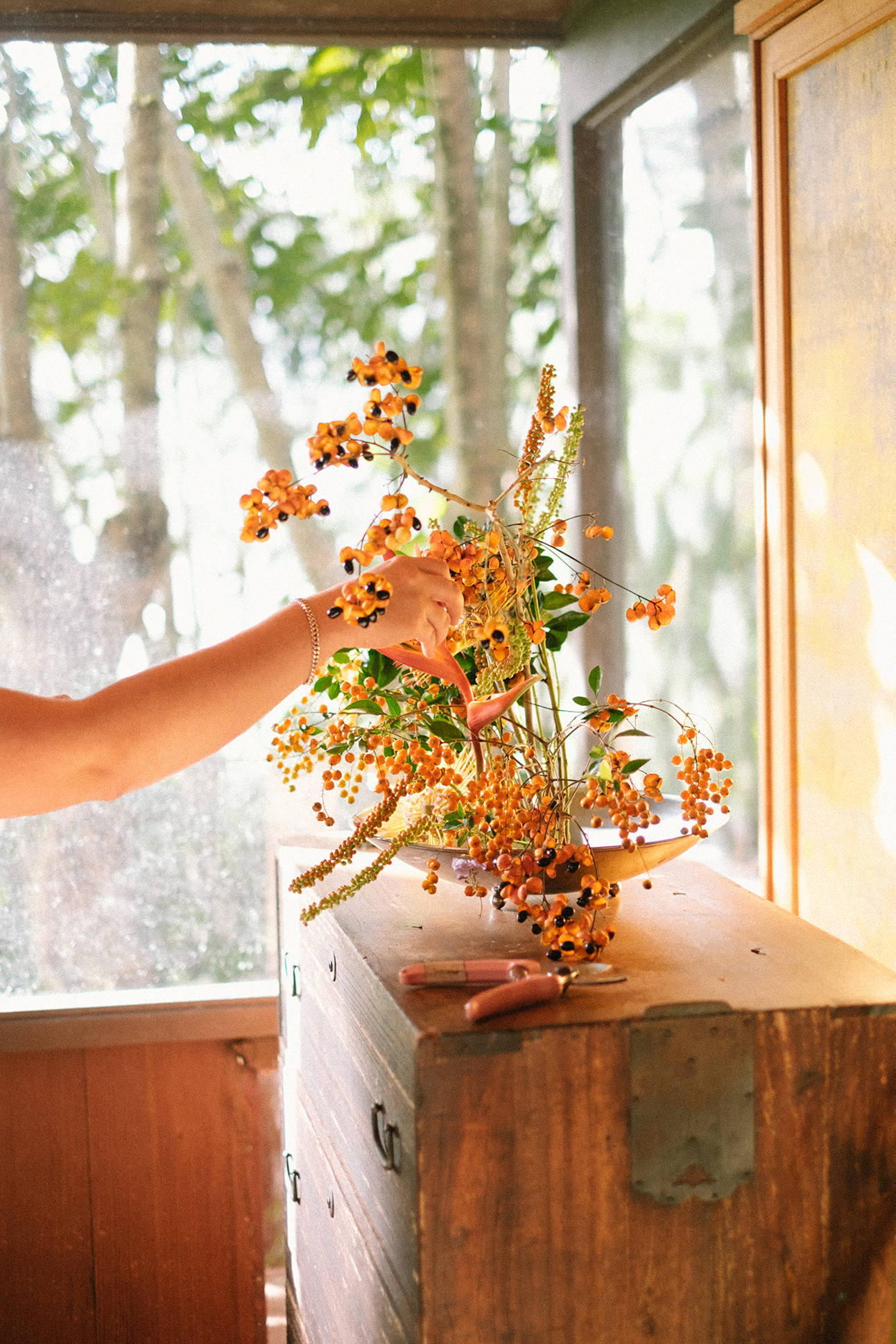
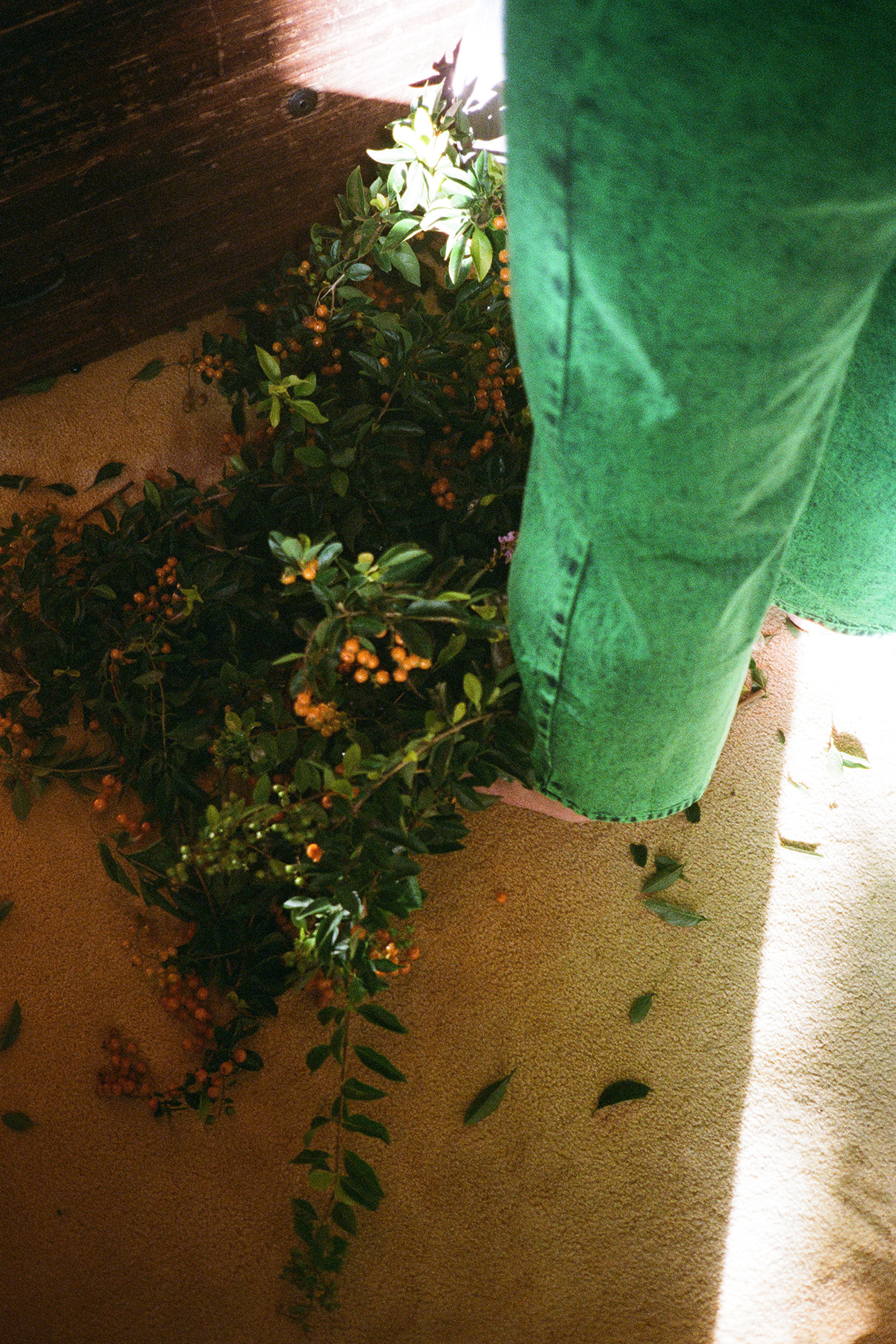
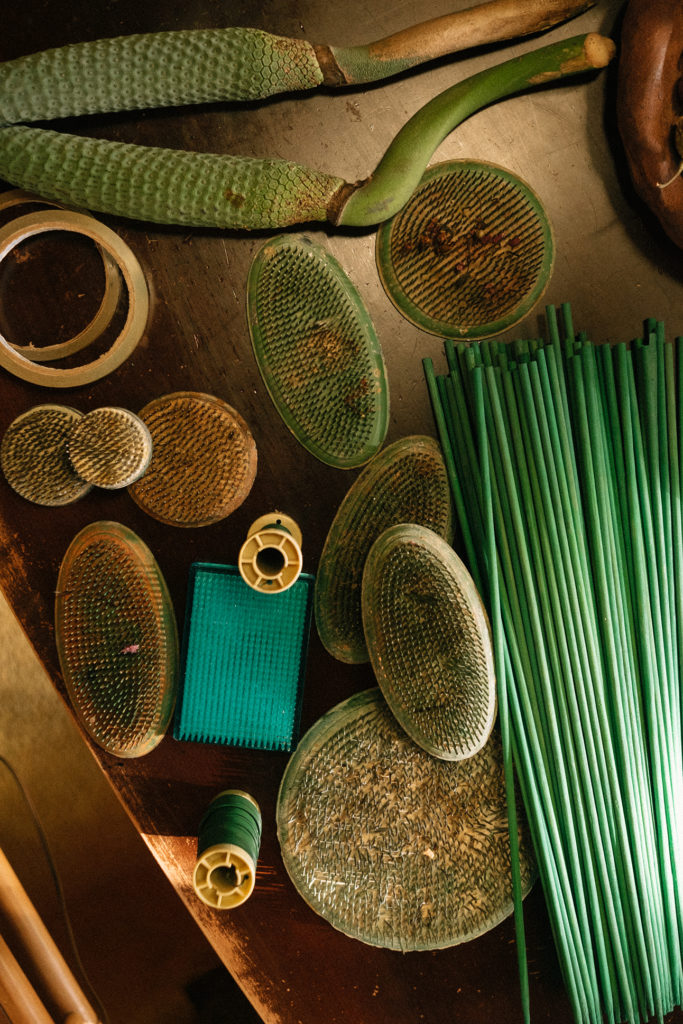
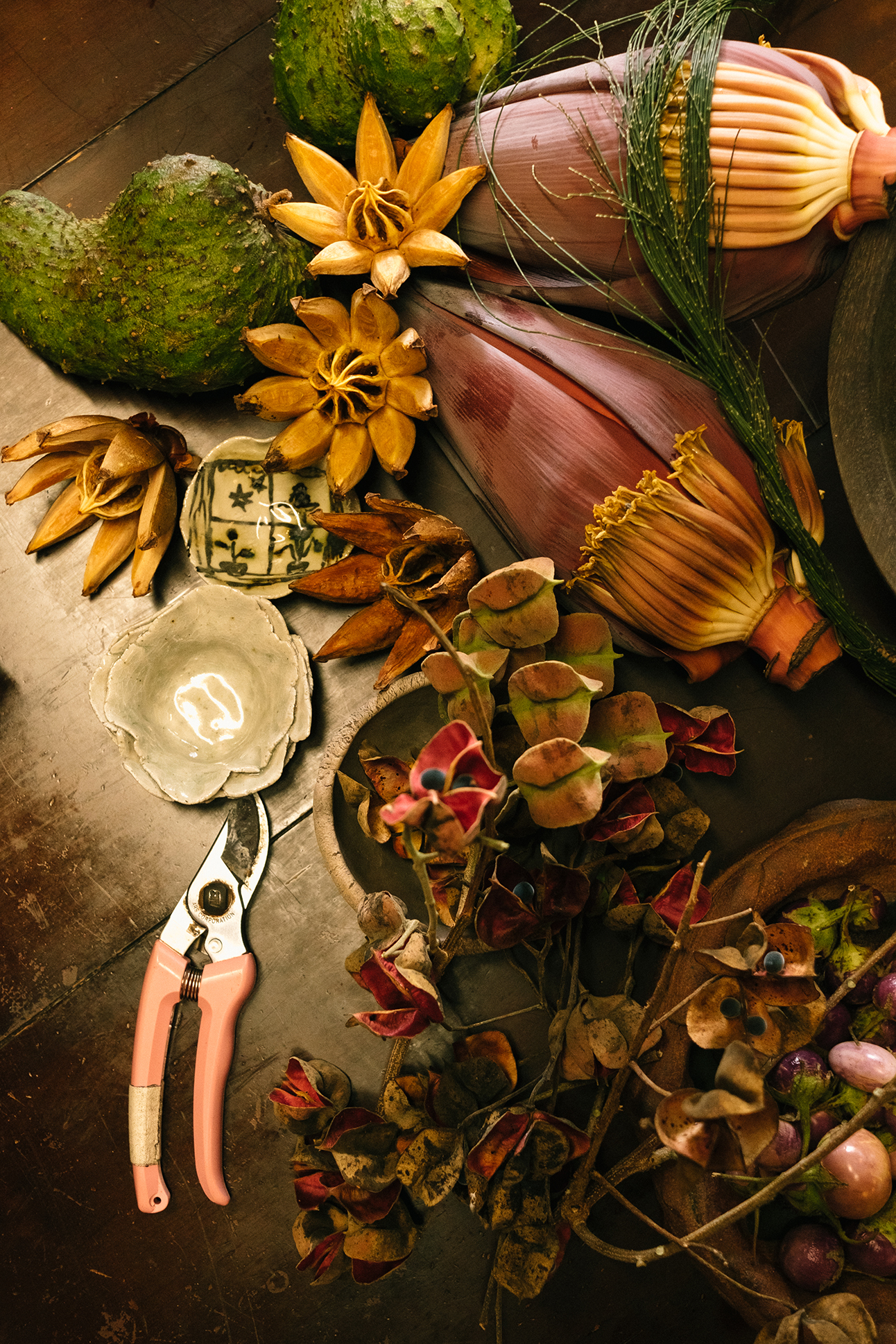
“It was this amazing treehouse,” MacDonald-Balasia says. “Growing up in that house, being surrounded by the umbrella trees and the guava trees, completely immersed in the natural world, influenced my curiosity and enchantment with nature.”
At 19 years old, MacDonald-Balasia began working for a flower shop in L.A. She was drawn in through the rabbit hold of ethnobotany, intrigued by flowers’ prominence in cultures throughout history. The daily proximity to flowers satiated her yearning to know more. Yet she was young, unsure of the practicality of a career in flowers. At one point she made a complete shift, moving back to Hawai‘i and taking a position with a state representative. But the job merely heartened her appetite to work with nature.
“I loved it, but it was a desk job,“ she says. “I missed touching nature, and grappling with branches and leaves. That was a turning point for me.“
When she moved to New York to be with her now husband, filmmaker Andrew Theodore Balasia, she applied to work for renowned floral arranger Emily Thompson on a whim. Thompson’s artistry would ultimately color MacDonald-Balasia’s own.
“Emily taught me that it’s more than just putting flowers in a vase,” she says. After three years under Thompson, she moved back to L.A. in 2018 and started her own business.
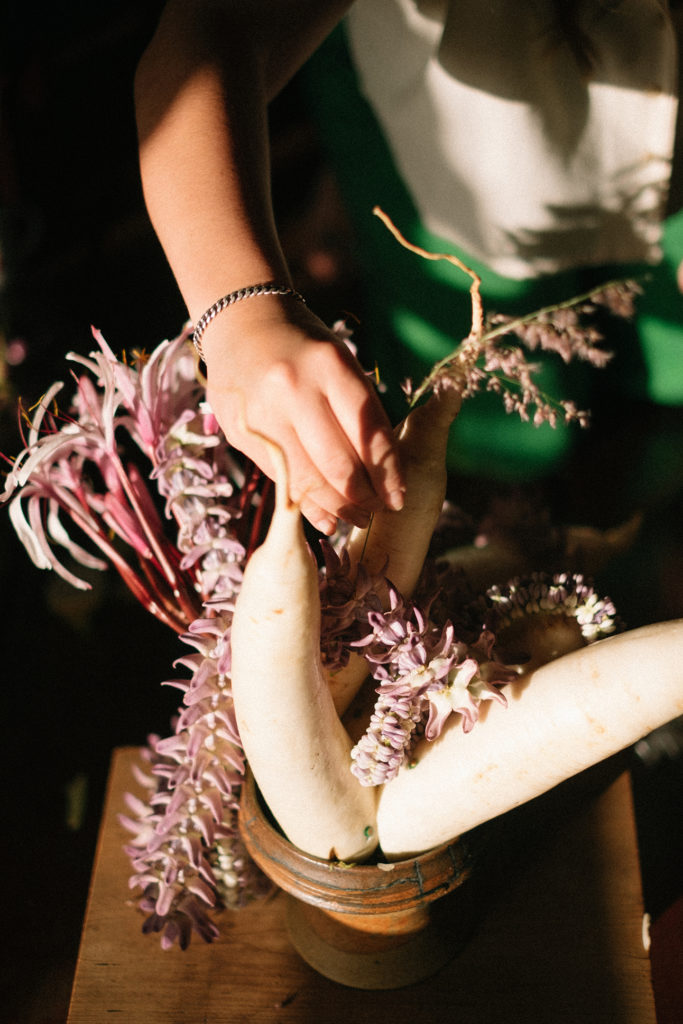
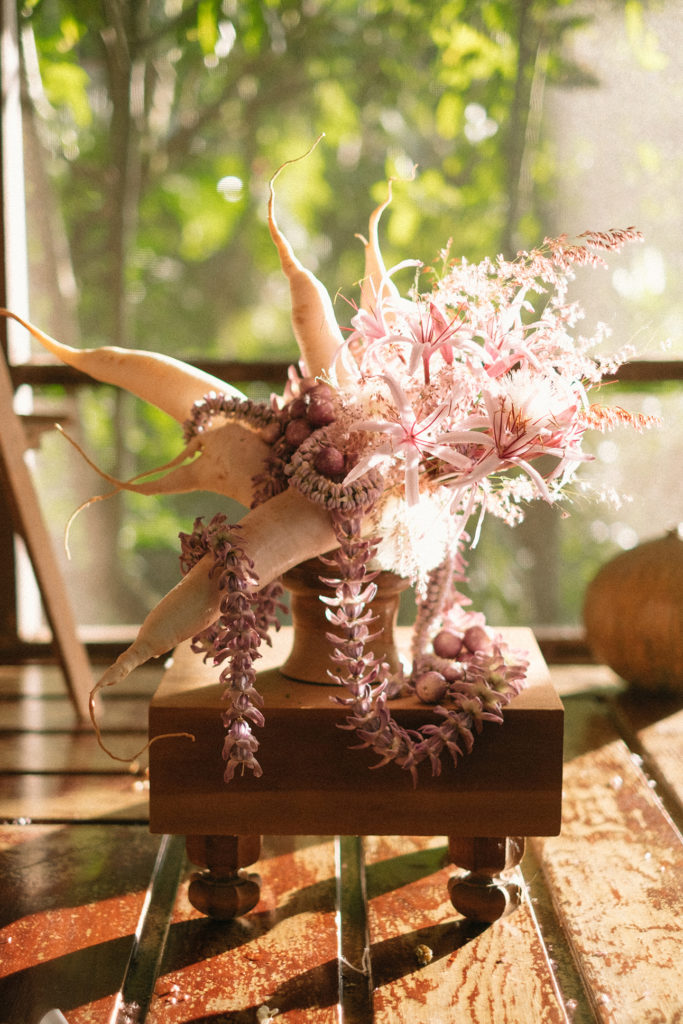
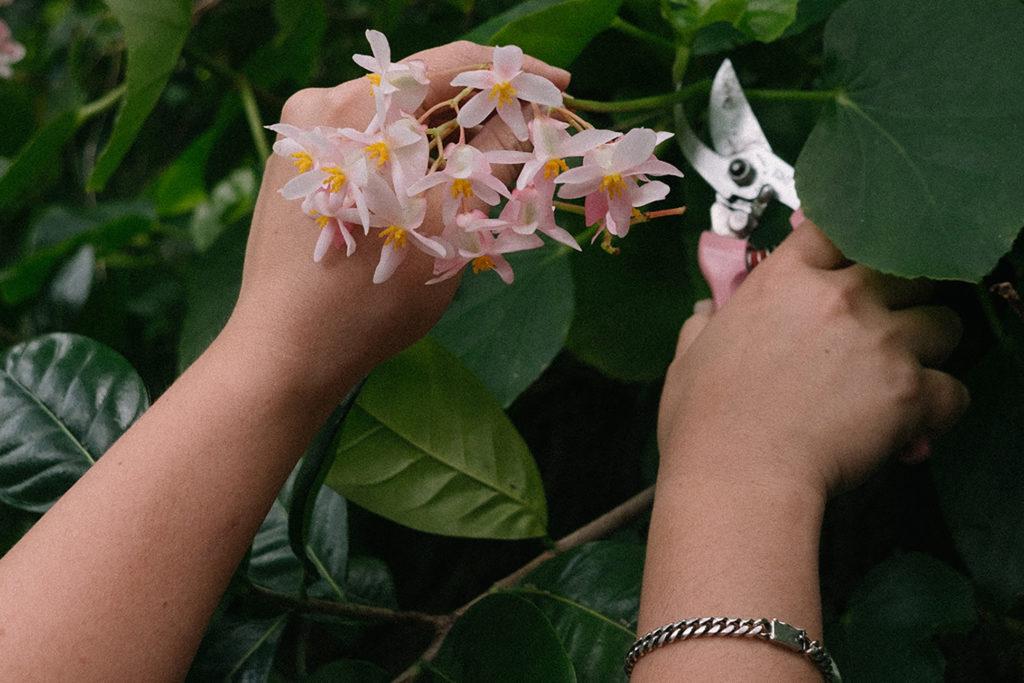
Since she started Renko Floral, her unique approach to the craft has attracted artists and brands, including editorial work for Cult Classic magazine in which MacDonald-Balasia integrated whole octopi and crabs with tropical flowers, and designed an arrangement for fashion brand Cult Gaia consisting of moth orchids, slices of lotus root, and baby potatoes strung together like a lei.
“I definitely focus more on material selection,” she says. She confesses flower markets don’t offer much inspiration. “Everyone’s getting the same stuff and making variations that look similar,” she says. “It’s just not exciting.” Foraging has remained crucial to her work. Instead of flower markets, she scours neighbor’s yards, parking lots, and the wet markets of her local Chinatown, all of which proffer a diverse, unique range of materials.
She designs with items that are “beyond simply beautiful or rare or expensive,” gravitating towards materials that are conventionally considered too unattractive or commonplace to be in a special arrangement, like baby eggplants or coral vine weeds.
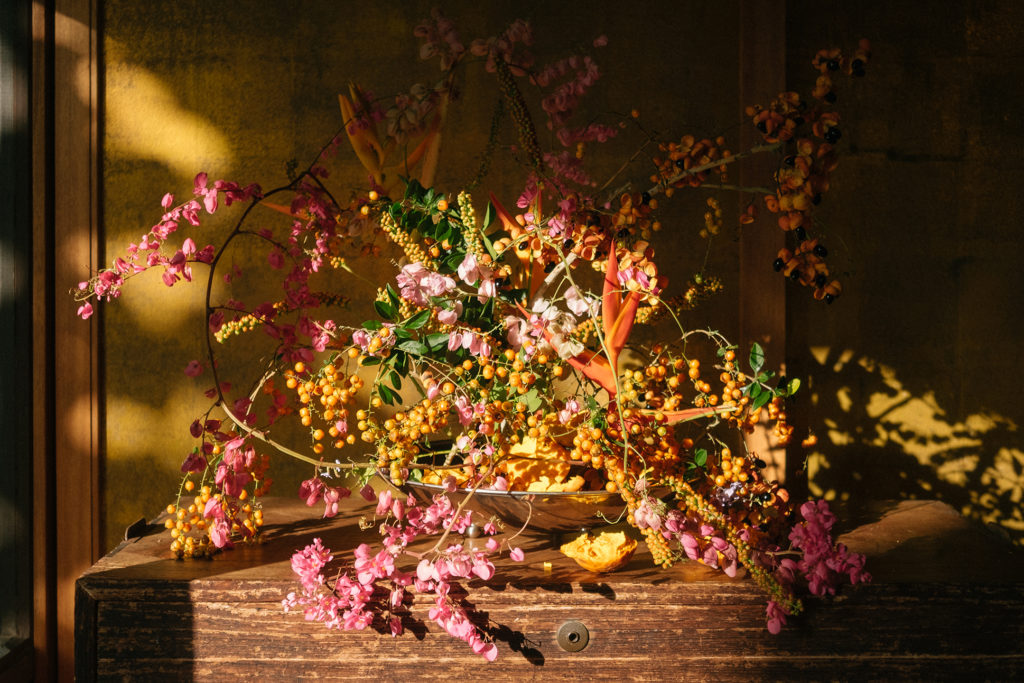
Her ethos of finding the beauty in strange things is what makes her creations so intriguing. Their eerie beauty proves that nature is often most mesmerizing when it is at its wildest. In her arrangements, anything from a simple daikon to fleshy cephalopods can warrant the center of attention.
“It’s not necessarily about it being beautiful,” she says. “It’s opening your eyes to seeing it in a different way.”


